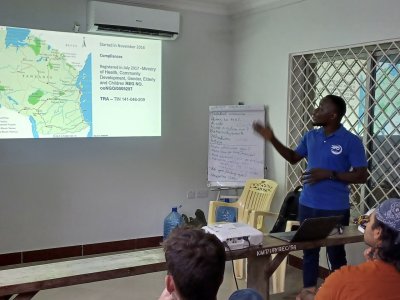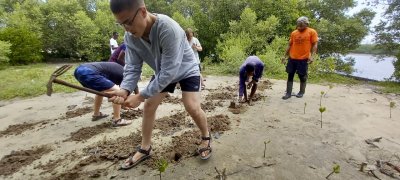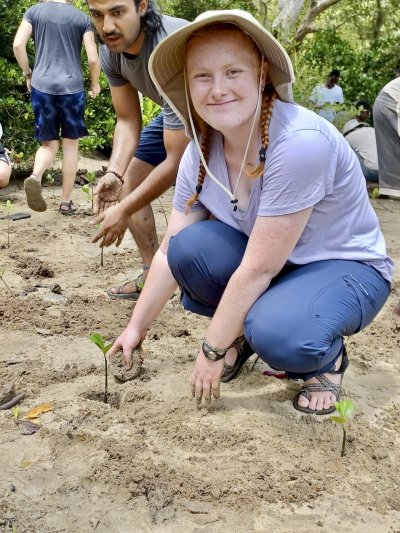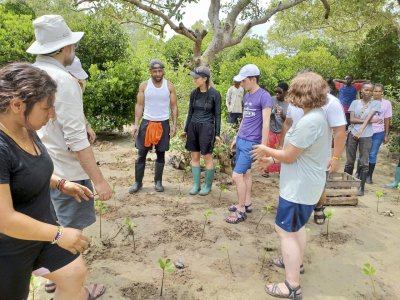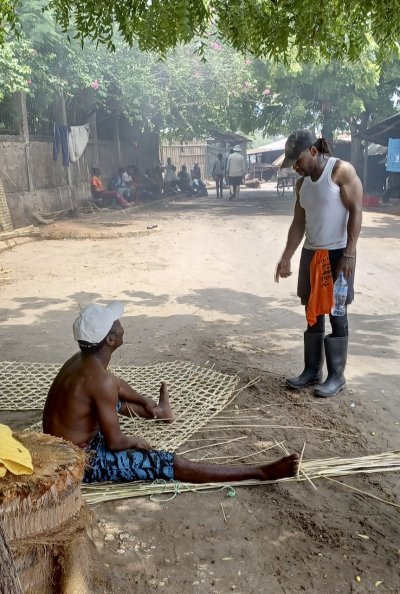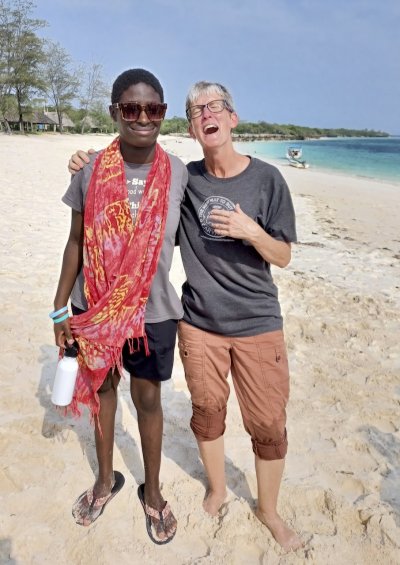Mangroves, Climate Justice, and Carbon Offsets
Saturday Feb 11, 2023
Thursday and Friday were spectacular. We received an introductory lecture by Aquafarms Organization AFO on Thursday afternoon to learn of their work in marine biology conservation. We were impressed for multiple reasons. Firstly, this NGO was started by 13 University of Dar es Salaam undergraduate students. It began in the cafeteria while conversing about how they could make a difference using their training in fisheries and marine biology. Secondly, they have a holistic commitment to integrate the economic needs of local communities, marine conservation, and the empowerment of youth and women in fisheries. We were inspired.

On Friday we spent the entire day with AFO. We met them at their offices near the community with which they have partnered in Kunduchi, a small fishing village directly on the coast north of downtown Dar. In the morning, we collaborated with the local community members to plant mangrove seedlings, using seedlings from their nursery. The ecological benefits of mangrove forests are huge: they provide habitat for the fish these communities rely on, they help control coastal erosion and flooding, and they make global contributions to carbon sequestration as mangrove forests sequester 10 times the amount of carbon as terrestrial forests and grasslands (by storing C below ground in the sticky, mucky soil they help create).
This is where mangrove forests have the potential to contribute toward addressing the economic inequity between the global south and western countries. Experiments like AFO have begun whereby local citizens are paid for the ecosystem services these forests contribute to all of us globally. While the organization is in the process of becoming certified for receiving funds on the carbon market, right now their budget to support local planting costs is through donations and grants. We decided to make a financial donation to them to offset our carbon contributions from SST. But, as you will see in the next paragraph some details are required!
Note: CO2e = carbon dioxide equivalents; kWh = kilowatt hours
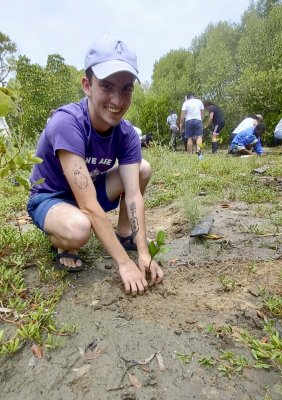
To do this, the students estimated their average monthly SST carbon emissions including the flight to Tanzania (3.81 metric tons CO2e) and their monthly contributions via electricity (~ 0.02 metric tons per capita based on an avg of 150 kWh for a 5-person house – or 30 kWh per person) and transportation (0.06 metric tons CO2e). (As a comparison, the average kWh per month of electricity contribution per person in the U.S. is 860 kWh = 0.44 metric tons CO2e). Since heating and cooling costs for most families here is very low and students are taking public transportation, this means most of the their contributions here in TZ are from the flight. For our 3 month trip, with one round-trip flight, our per capita monthly emissions were estimated to be 1.37 metric tons CO2e. Since, the average monthly metric tons of CO2e emissions per person in the U.S. is 1.2 (taken from 14 CO2e per year) this suggests that the lower energy consumption for 3 mths in TZ contributes significantly to reducing the impact of flying. In order to offset our additional contributions, we would need to pay 1.37-1.2 = 0.17 tons per person X 16 people = 2.72 metric tons. At the most expensive carbon prices (in the European Union for example ~ $90 per ton) our payment would be around $300.00.
If we paid a direct offset to AFO, they estimated that planting an acre of mangrove seedlings cost around $1000. Studies show that an acre of mangroves sequesters ~ 1 ton of CO2e every year. So if SST paid for 3 acres of mangrove plantings, it would compensate for our increase CO2 release even if we came every year (since these 3 acres continue to sequester 3 tons annually). For more information about AFO, please see their YouTube video channel.
Our team has been exploring how communities have been vying for access to resources for thousands of years. The systems we have today are a result of a complex interplay of human and ecological history. In the last few weeks, we are examining whether we can use our commitments to justice and equity to pay for the environmental costs of climate change by committing to pay for restoring the affected community’s ecological and social health. The challenge is large, the rewards are life-giving.
After a brief tour of the fish market in Kunduchi, we took a 30 minute boat ride to Mbudya Island, a protected marine reserve. We snorkeled along the shore (a first time event for all but one of our students) exploring the coral and grass beds. We saw a diversity of fish, sea stars, sea cucumbers, coral, and of course tons of beautiful algae (known to the layperson as seaweed!). A fresh lunch of grilled fish and chips capped a near perfect day!
We did make a donation to AFO, in addition to planting about 200 mangrove trees. Some small steps, but important learning. Thanks to the AFO team (including Jerry, Yusuf, Benard) and the community members (including Emmanuel and his colleagues) this is a day we will remember!
